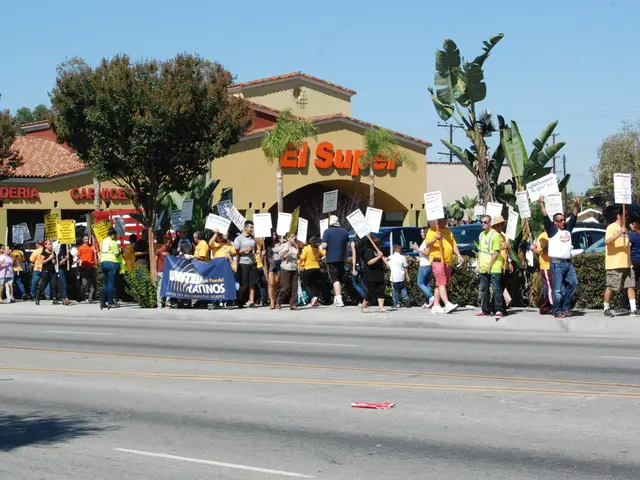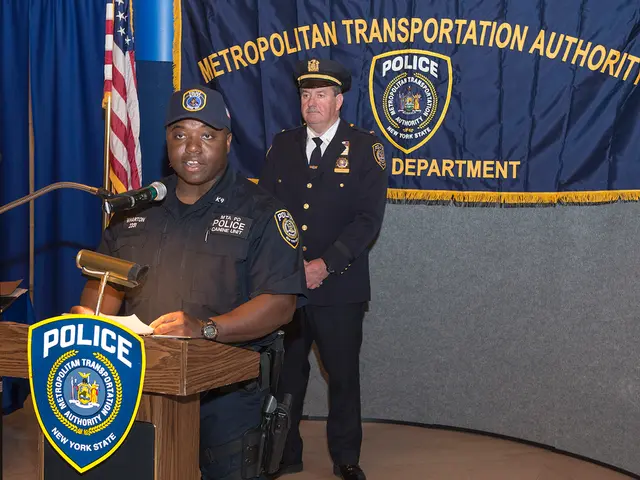Frequent School Closures Criticized by SPD in Schleswig-Holstein
North authorities criticized frequent student absences in northern schools - Northern German school drop-out rate faces criticism from SPD: inadequate education, infrastructure, and social welfare services cited as potential reasons.
martin_habersaat: Let's let it rip, shall we? The SPD's education spokesman, Martin Habersaat, is about ready to throw some serious shade on the mind-boggling school closures in Schleswig-Holstein. New figures from the Ministry of Education show that 11.2 percent of lessons at general schools were recently scrapped, that's nearly every ninth hour.
In the 2023/24 academic year, the rate was even higher at 11.9 percent. To make matters worse, 2.5 percent of lessons were canceled without a replacement (2.6 percent in 2023/24), and 8.7 percent didn't happen as planned (9.3 percent in 2023/24) – you can bet your boots those were covered by another teacher.
Now, let's take it back to 2017, just after the CDU took command of the Ministry of Education. Since then, school closures have been on the rise, and Habersaat's got the numbers to prove it. The school closure rate a year before CDU took over was a mere 9.5 percent. The 2022/23 academic year saw a record-breaking 12.2 percent, but don't worry, folks – things have been slowly headed down in recent times, but we're still a country mile away from the numbers Karin Prien (CDU) found when she took over the Ministry of Education. Word is, she was in charge until May.
Vocational Schools
Are you thinking vocational schools are immune to this mess? Well, hold on to your hats, because it's even worse there – a whopping 13.7 percent (13.6 percent in 2023/2024) of those lessons were canned! In 3.9 percent of instances, lessons were ditched without a replacement (3.8 percent in 2023/2024), and in 9.8 percent, those lessons didn't go as planned.
Habersaat spills the beans that primary schools in Segeberg get canceled pretty regularly without a replacement, and lessons at the support center in Stormarn follow suit. High schools in Lübeck and Rendsburg-Eckernförde, however, seem to have their fair share of cancellations without replacements.
Habersaat's all worked up because 90 percent of canceled lessons at the higher levels are replaced by independent student work. You read that right, folks – the students are basically on their own! Ministry figures show that the most common cause of school closures is the staff getting sick (a huge 63 percent). In another 27 percent of cases, those teachers are too swamped with stuff like exams, project days, class, and school trips.
In light of this mess, the SPD's calling on the state government to stop cutting teacher positions and rely less on temporary contracts for substitute teachers. Can you blame 'em? After all, the fewer substitutes, the more consistent the education, right? Or at least, that's the idea!
A Few Insights
- Demographic Changes: A decrease in the birth rate or urban migration might lead to a fall in student enrollment, resulting in school closures.
- Financial Constraints: Budget cuts can force schools to shut their doors if they're unable to maintain financial stability.
- Policy Changes: Consolidation, restructuring, or optimizing resources might lead to school closures in an effort to improve efficiency.
- Socioeconomic Factors: Economic conditions like poverty or lack of job opportunities can affect a community's ability to support local schools, leading to closures.
For specific reasons related to Schleswig-Holstein, checking in with local educational authorities or recent studies may provide more context. Keep it locked here for updates! 🔐🌍🔥🚀🚀🚀🤘🤘🤘🤘🤘
- Martin Habersaat, the SPD's education spokesman, expressed concerns about the high rate of school closures in Schleswig-Holstein, particularly in vocational schools, where 13.7% of lessons were canceled in the 2022/2023 academic year.
- In response to the frequent school closures, Habersaat urged the state government to reconsider its policies on teacher positions and temporary contracts for substitute teachers, suggesting that a decrease in substitutes could lead to more consistent education and better overall student outcomes.








